Colebrooke is a village and parish in Devon, England about 8 km west of Crediton. The main point of interest is the church and the connection to Henry Kingsley's novel The Recollections of Geoffry Hamlyn. Also Uncle Tom Cobley, of the folk song, signed his will at Pascoe House, but is buried 4 miles west at Spreyton. The champion Devon wrestler, Abraham Cann was born and buried here. He won the all-comers wrestling crown in London.

Meavy is a small village, civil parish and former manor in the English county of Devon. Meavy forms part of the district of West Devon. It lies a mile or so east of Yelverton. The River Meavy runs near the village. For administrative purposes the parish is grouped with the parishes of Sheepstor and Walkhampton to form Burrator Parish Council, and for electoral purposes it is grouped with the same two parishes to form Burrator Ward.

Bratton Clovelly is a village, parish and former manor in the west part of Devon, England. It is situated about 8 miles (13 km) south-west of Okehampton immediately north of the A30 road. The manor of Bratton Clovelly was listed in the Domesday Book of 1086. The parish church dedicated to St Mary is 15th-century, with many Norman features. The former village stocks are kept in the belfry. The parish is thought to have been the birthplace of influential 13th-century jurist Henry de Bracton; however, this claim is also made for at least two other places.

Haccombe is a village and former civil parish and historic manor, now in the parish of Haccombe with Combe, in the Teignbridge district, in the county of Devon, England. It is situated 2 1/2 miles east of Newton Abbot, in the south of the county. It is possibly the smallest parish in England, and was said in 1810 to be remarkable for containing only two inhabited houses, namely the manor house known as Haccombe House and the parsonage. Haccombe House is a "nondescript Georgian structure" (Pevsner), rebuilt shortly before 1795 by the Carew family on the site of an important mediaeval manor house. In 1881 the parish had a population of 14. On 25 March 1885 the parish was abolished and merged with Combe in Teignhead and to form "Haccombe with Combe".

Dartmouth Friary was an Augustinian friary in Dartmouth, Devon, England. It was founded in 1331 and ceased to function as a friary in 1347.

Highweek, less commonly called Highweek Village is an ecclesiastical parish, former manor and village, now a suburb of Newton Abbot, but still retaining its village identity, in the civil parish of Newton Abbot, in the Teignbridge district, in the county of Devon, England. It is prominent and recognisable due to its high location on a ridge on the north western edge of the town. The area is the centre of the modern electoral ward of Bradley. That ward's population at the 2011 census was 5,043.
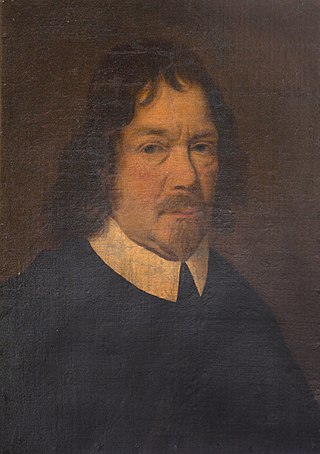
Sir William Pole (1561–1635) of Colcombe House in the parish of Colyton, and formerly of Shute House in the parish of Shute, both in Devon, was an English country gentleman and landowner, a colonial investor, Member of Parliament and, most notably, a historian and antiquarian of the County of Devon.

Sir Thomas Monck of Potheridge in the parish of Merton, Devon, was Member of Parliament for Camelford, Cornwall, in 1626. He was the father of George Monck, 1st Duke of Albemarle (1608–70), KG and of Nicholas Monck, Bishop of Hereford.

The landed gentry and nobility of Devonshire, like the rest of the English and European gentry, bore heraldic arms from the start of the age of heraldry circa 1200–1215. The fashion for the display of heraldry ceased about the end of the Victorian era (1901) by which time most of the ancient arms-bearing families of Devonshire had died out, moved away or parted with their landed estates.

The estate of Acland in the parish of Landkey, near Barnstaple in North Devon, England, was from 1155 the earliest known seat of the influential and wealthy family of Acland, to which it gave the surname de Acland. It is situated about 3/4 mile north-east of the village of Landkey, from which it is now cut off by the busy A361 North Devon Link Road.

Great Fulford is an historic estate in the parish of Dunsford, Devon. The grade I listed manor house, known as Great Fulford House, is about 9 miles west of Exeter. Its site was said in 1810 to be "probably the most ancient in the county". The present mansion house is Tudor with refurbishment from the late 17th century and further remodelling from about 1800. The prefix "Great" dates from the late 17th century and served to distinguish it from the mansion house known as "Little Fulford" in the parish of Shobrooke, Devon, about 8 miles to the north-east, also owned briefly by Col. Francis Fulford (1666–1700), as a result of his marriage to the heiress of the Tuckfield family. Great Fulford has been the residence of the Fulford family, which took its name from the estate, from the reign of King Richard I (1189–1199) to the present day. There are thus few, if any, families in Devonshire of more ancient recorded origin still resident at their original seat. In 2004 the estate comprised 3,000 acres.

Sir William Huddesfield of Shillingford St George in Devon, was Attorney General for England and Wales to Kings Edward IV (1461–1483) and Henry VII (1485–1509). He built the tower of St George's Church, Shillingford.
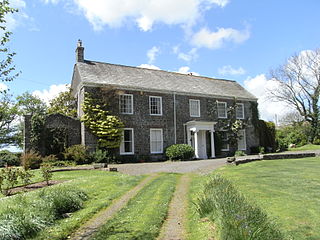
Thuborough in the parish of Sutcombe, Devon, England, is an historic estate, formerly a seat of a branch of the Prideaux family, also seated at Orcharton, Modbury; Adeston, Holbeton; Soldon, Holsworthy; Netherton, Farway; Ashburton; Nutwell, Woodbury; Ford Abbey, Thorncombe, all in Devon and at Prideaux Place, Padstow and Prideaux Castle, Luxulyan, in Cornwall. The present mansion house, comprising "Thuborough House" and "Thuborough Barton", the north-east block, is a grade II listed building.

Richard Crocker of Devon, England, was a Member of Parliament for Tavistock in Devon in 1335. His descendants were the prominent Crocker family of Crocker's Hele in the parish of Meeth, Devon, later seated at Lyneham in the parish of Yealmpton, Devon until 1740.
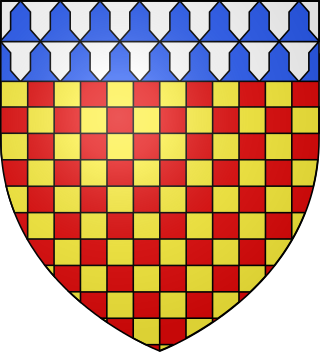
Sir John Chichester lord of the manor of Raleigh in the parish of Pilton, near Barnstaple, North Devon, was Sheriff of Devon in 1576/7 and/or in 1585 and died of gaol fever contracted whilst acting as a magistrate at the Lent Black Assizes of Exeter in 1586.
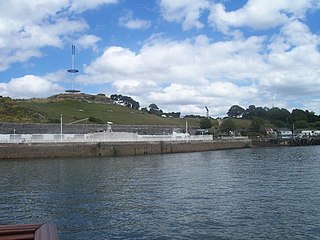
Mount Wise is a historic estate situated within the historic parish and manor of Devonport and situated about one mile west of the historic centre of the city of Plymouth, Devon. It occupies "a striking waterfront location" with views across Plymouth Sound to Mount Edgcumbe and the English Channel. Until 2004 it was a headquarters for senior Admiralty staff and was inaccessible to the public.
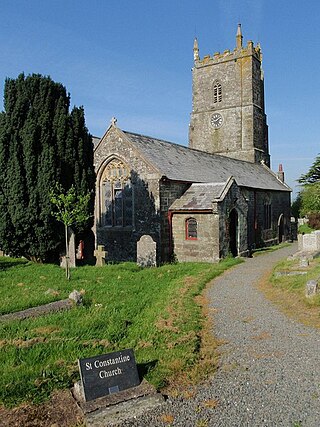
Milton Abbot is a village, parish, and former manor in Devon, 6 miles (9.7 km) north-west of Tavistock, Devon, and 6 miles (9.7 km) south-east of Launceston, Cornwall.
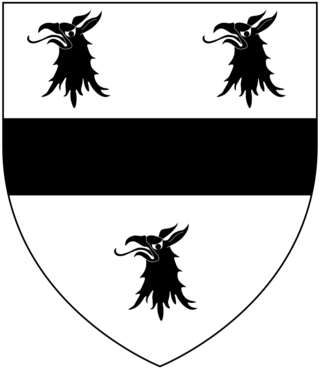
Kenedon is an historic manor situated in the parish of Sherford in Devon.
Collacombe is an historic manor in the parish of Lamerton, Devon, England. The manor house survives as a grade I listed building, known as Collacombe Barton or Collacombe Manor (House).

Painsford is an historic estate in the parish of Ashprington in Devon.



















